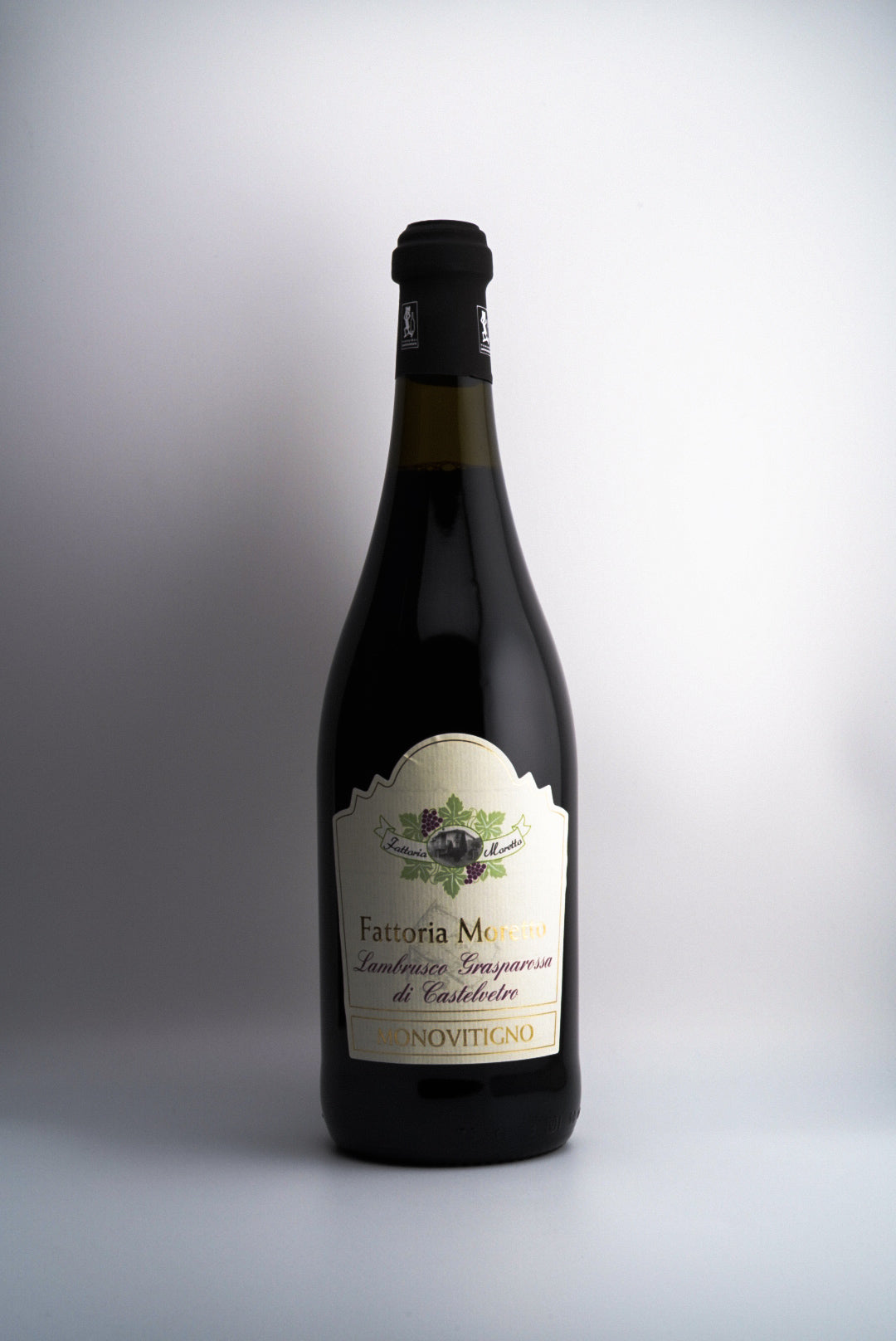Wine Aging and Cellaring - Wine 101 Course (Week 6 of 8)
Welcome to Week 6 of our Wine 101 Course! This week, we're diving into the fascinating world of wine aging and cellaring. Whether you're a collector looking to start a cellar or simply curious about how that dusty bottle in your grandma's basement might taste, this lesson will give you valuable insights into the transformation of wine over time.
The Magic of Wine Aging
Wine is one of the few consumables that can improve with age. But what exactly happens when wine ages? Let's break it down:
Chemical Changes
- Tannins soften: Tannins are compounds that give young red wines their astringent quality. Over time, these molecules link together and precipitate out, resulting in a smoother mouthfeel.
- Flavors develop: Complex chemical reactions create new flavor compounds, often leading to tertiary aromas like leather, tobacco, and forest floor in reds, or honey and nuts in whites.
- Color evolution: Red wines typically become lighter and more brick-colored, while white wines deepen in color, becoming more golden or amber.
How Wines Age Over Time
- Young wines (0-2 years): Vibrant fruit flavors, higher acidity, and more pronounced tannins in reds.
- Early maturity (2-5 years): Fruit flavors begin to mellow, tannins soften, and secondary flavors emerge.
- Peak maturity (5-10 years, varies by wine): Optimal balance between fruit, acidity, and developed flavors.
- Late maturity (10+ years also varies by wine): Tertiary flavors dominate, fruit may fade, but complexity increases.
Note: Some wines that can age 15 years and still need more time are (from top producers, non-exhaustive): Barolo, Bordeaux, Burgundy, Napa Cab, German Riesling, Champagne, Australian Shiraz, Brunello di Montalcino, Chianti Classico Gran Riserva, Super Tuscans, Châteauneuf-du-Pape, Hermitage, Cote-Rotie, Rioja, Argentinian Malbec.
Tasting Notes on Aged Wines
Aged wines often display a range of complex flavors and aromas. Here are some common tasting notes:
Red Wines
- Dried fruits (prune, fig)
- Earthy notes (forest floor, mushroom)
- Leather and tobacco
- Spices (nutmeg, cinnamon)
White Wines
- Honey and beeswax
- Nuts (almond, hazelnut)
- Petrol (especially in aged Riesling)
- Dried apricot or marmalade
Ideal Cellaring Conditions
To age wine successfully, you need to create the right environment. Here are the key factors:
- Temperature: Aim for a consistent 55°F (13°C). Fluctuations are more harmful than slightly higher temperatures.
- Humidity: Keep it between 60-80% to prevent corks from drying out.
- Light: Store wines in darkness. UV rays can degrade wine.
- Vibration: Minimize vibrations, which can disturb sediment and accelerate chemical reactions.
- Position: Store bottles horizontally to keep corks moist and maintain their seal.
Which Wines Benefit from Aging?
Not all wines improve with age. Here's a general guide:
Wines That Often Improve with Age
- High-quality red Bordeaux and Burgundy
- Barolo and Barbaresco
- Vintage Port
- German Riesling (both sweet and dry)
- Champagne (especially vintage)
Wines Best Consumed Young
- Most white wines (except for those mentioned above)
- Lighter red wines (e.g., Beaujolais)
- Rosé wines
- Most New World wines, which are often made for early consumption
Remember, even among age-worthy wines, only a small percentage will truly improve beyond 5-10 years. It's often said that more wine is consumed too late rather than too early!
The Evolution of Wine Cellaring: From Necessity to Luxury
Historically, cellaring wasn't just a hobby for wine enthusiasts—it was a necessity. Before modern winemaking techniques and global transportation, wines were often harsh and unpalatable when young. Cellaring allowed these wines to mature and become drinkable. Additionally, it ensured a year-round supply of wine between harvests.
However, the landscape of wine cellaring has changed dramatically in recent decades. Several factors have contributed to a decline in traditional long-term cellaring:
- Financial constraints: Quality, age-worthy wines can be expensive, and many people can't afford to invest in wines they won't drink for years.
- Changing housing trends: With more people renting or living in smaller spaces, fewer have access to ideal cellaring conditions.
- Lack of knowledge: Many wine drinkers aren't aware of the benefits of aging wine or how to properly cellar bottles.
- Immediate gratification culture: In our fast-paced world, the idea of waiting years to enjoy a purchase is less appealing to many.
- Improvement in winemaking: Modern techniques have made many wines enjoyable upon release, reducing the need for aging.
The Modern Cellar: More Than Just Aging
Despite these challenges, we believe that more people should consider starting a cellar, even if it's on a small scale. Here's why:
A well-stocked cellar isn't just about storing expensive wines for decades. It's about having the right wine for every occasion. A diverse cellar should include:
- "Quaffers" or "Cannon Fodder": These are your everyday, affordable wines. They're perfect for casual dinners, unexpected guests, or when you want a glass but don't want to open something special. Think $10-$15 bottles that over-deliver on quality.
- Mid-Range Wines: A step up from quaffers, these wines ($15-$30) are great for weekend dinners or when you're hosting friends who enjoy wine but aren't connoisseurs.
- Special Occasion Wines: These are your higher-end bottles ($30-$100+) reserved for celebrations, important dinners, or to mark significant events.
- Age-Worthy Wines: A few bottles that will improve with age, to be opened on future special occasions or to satisfy your curiosity about wine evolution.
- Diverse Styles: Keep a mix of reds, whites, rosés, and sparkling wines to suit different foods, seasons, and preferences.
By maintaining such a cellar, you're always prepared. Having an impromptu dinner party? You've got options. Want to impress a wine-loving friend? You're covered. Celebrating a promotion? You have that special bottle waiting.
This approach to cellaring is about enhancing your everyday life and social connections through wine. It's about having the flexibility to pair the right wine with the right moment, whether that's a casual Tuesday night or a milestone birthday.
This is why we believe more people should start a cellar. It's not about becoming a wine snob or locking away bottles for decades. It's about enriching your life, being a great host, and always having the perfect wine at hand for any occasion.
Practical Tips for Starting Your Wine Cellar
- Start small and focus on wines you enjoy.
- Keep detailed records of your collection, including purchase dates and suggested drink-by dates.
- Invest in proper storage before investing in expensive wines.
- Diversify your collection with both age-worthy and ready-to-drink wines.
- Be patient! Aging wine is a long-term endeavor.
Tasting Exercise
If possible, try to taste two vintages of the same wine side by side - a young one and one that's at least 5 years old. Pay attention to the differences in color, aroma, flavor, and texture. This comparison will give you a tangible sense of how wines evolve over time.
As we wrap up this week's lesson, remember that wine aging is part science, part art, and always an adventure. Whether you're planning to cellar wines for decades or simply want to understand why that bottle of Barolo is so expensive, understanding wine aging adds a new dimension to your wine appreciation.
Next week, we'll explore the exciting world of sparkling wines and fortified wines. Until then, happy (and patient) sipping!
Wine 101

Holiday Pairing Guide — 10 Essentials Thanksgiving Wine Pairing Guide: 10 Wines for a Delicious Feast Thanksgiving is our favorite kind of chaos: a table full of savory, sweet, crunchy, and creamy — all at...
Read more →Latest articles

Wine Education · Opinion Don’t Fear Non-Vintage: The Case for Blending Across Seasons We expect wine to behave like a time capsule. One year, frozen in glass. But a single season can be cruel or kind, and ...

What's Below: BBQ & Grilling Perfect Red Wines Meat & Wine Matches Veggie Grill Wines Pool Party Essentials Crisp White Wines Rosé All Day Sparkling Options Party Planning Ho...

What's Below: European Gems Slovenia's Hidden Tuscany Austria's White Wine Wonderland Spain's High-Altitude Surprise New World Discoveries Mexico's Wine Revolution Brazil's Italian Influ...

We've paired every single Trader Joe's cheese with the perfect wine. Your next cheese board is about to get very, very good. The Ultimate Trader Joe's Cheese & Wine Pairing Guide Look, Trader Joe...

"Liberté, égalité, fraternité" The key to great Bastille Day wine pairing is choosing authentic French wines that complement traditional French foods without overpowering them. Rich cheeses, herb-crus...

What wine should you have on 4th of July? These (All American) ones!

"Wine was never trying to be cool. And thank goodness for that." Every few months, another think piece declares wine dead. "Gen Z has killed wine." "Hard seltzers are the new wine." "Why wine isn't cool...

What's Below: The Foundation Introduction The Absolute Reality Real Shopping Experience Digital & Psychological The iPhone Test Psychology of Enhancement Addressing the Purists ...

Image source: Valentina Vineyards. San Diego's top source of organically farmed wine grapes. San Diego County boasts over 172 active wineries and vineyards across diverse microclimates, from coastal va...

Italy boasts a rich tapestry of wine regions, each with its unique terroir, indigenous grape varieties, and winemaking traditions. Join us on a journey through all 20 Italian administrative regions, from int...

The journey of wine grapes from vineyard to bottle is a fascinating process guided by both science and tradition. Let's explore how vignerons determine the perfect moment to pick their grapes for optima...

Easter Wine Pairings That Won't Disappoint Easter is hopping our way, and whether you're hosting an elegant brunch or a family feast, the right wine can transform your gathering from merely memorabl...

Explore Sherry: Spain's Ancient Fortified Treasure Source: Consejo Regulador de los Vinos de Jerez y Manzanilla. If you are trying to get an excellent academic understanding of Sherry, its various styl...

Explore Washington State Wine Source: Washington State Wine Commission. If you are trying to get an excellent academic understanding of Washington State, its various wine regions, and its role within t...

















